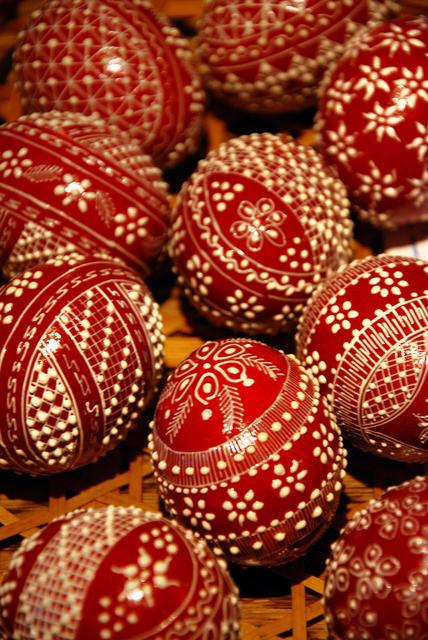The tradition of painting eggs for Easter is almost two thousand years old. Now it is impossible to determine for certain why the decoration of Easter eggs with their own hands has become so common in the Christian world. There are many legends explaining this custom. Not all interpretations are directly related to the Resurrection of Christ and, in general, to Christianity. Most of them date back to pagan times, when the egg was considered a symbol of fertility. With the advent of spring, in ancient times, they began to paint eggs, decorate them in various ways to appease the gods and grow a good harvest.

But there are many Christian traditions that tell about the beginning of this centuries-old tradition. The most common is the legend of Mary Magdalene, who brought the emperor Tiberius after the resurrection of Jesus a chicken egg. He did not believe her story about the Resurrection, saying that such a thing would be possible if the egg brought in turned red. This was immediately fulfilled, and red has since become traditional for decorating Easter eggs.
According to another legend, the red Easter eggs are the blood of the crucified Christ, and the beautiful patterns on them are the tears of the Mother of God. After the Lord’s death, the faithful saved every drop of his blood that had become hard as a stone. When he was resurrected, they began to transmit them to each other with the joyful message “Christ is risen!”
The third version tells about the childhood of Jesus Christ, who was very fond of playing with chickens. Our Lady painted their eggs and presented him instead of toys. With a plea for pardon, she came to Pontius Pilate with an offering of painted eggs. But they fell out of her apron and rolled around the world.
There are legends that are not at all religious. So, for example, one of them tells that on the birthday of Marcus Aurelius, a chicken laid an egg with red spots. This event foreshadowed the birth of the future emperor. Since then, the Romans had a custom to paint eggs and send them to each other as a gift. Christians adopted this tradition, putting their meaning into it.
There is a more practical explanation. During Great Lent, it is forbidden to eat animal food, including eggs. But the chickens continue to sweep. To prevent eggs from spoiling longer, they were cooked. And to distinguish boiled eggs from raw, they were stained.
Be that as it may, the tradition of painting eggs has survived to this day, gathering the whole family for this activity. A lot of customs, rites and beliefs among Christians are associated with already painted eggs. The sanctified Easter egg was even credited with mystical properties. It was believed that it could extinguish a fire, prevent cattle diseases and make her coat smooth, return her beloved, save from theft, drive out
evil spirits from the house
. Having dipped the dye in the water, the girls washed themselves with this water in order to preserve youth and beauty. The shell of Easter eggs is scattered across the field so that the crop is good.
It is unlikely that anyone will be able to accurately prove or disprove the miraculous power of Easter eggs, but some traditions of antiquity have come down to us. Rolling painted eggs from a hill is still a favorite pastime of children on Easter week. The Easter meal begins with them, and the most beautiful eggs with the good news “Christ is Risen!” Are given to friends and acquaintances.